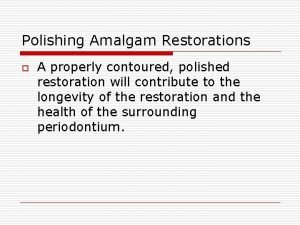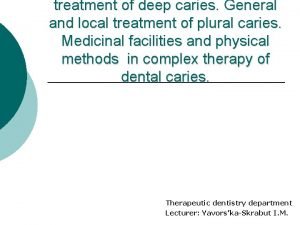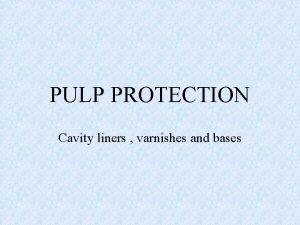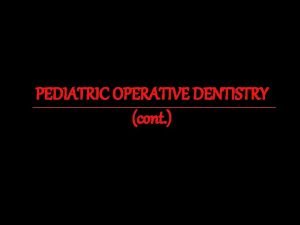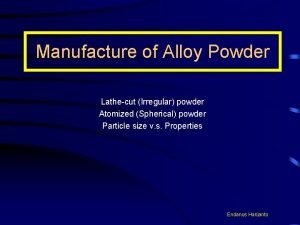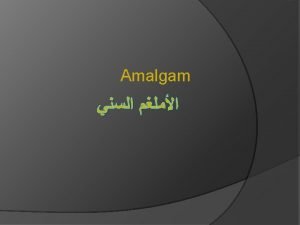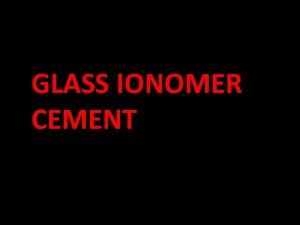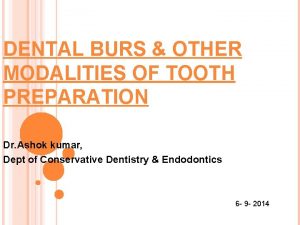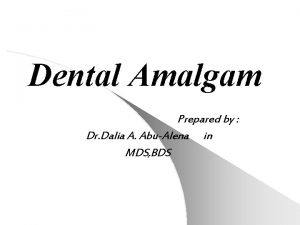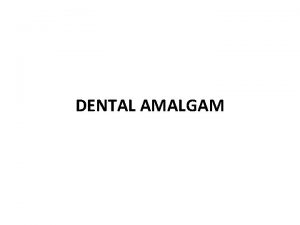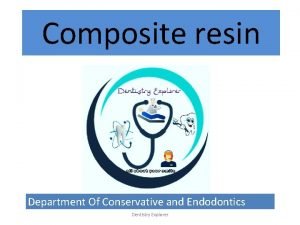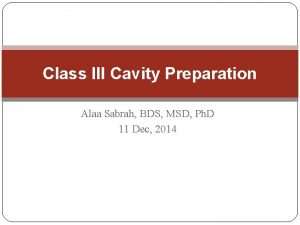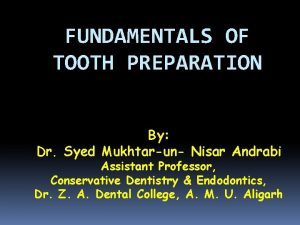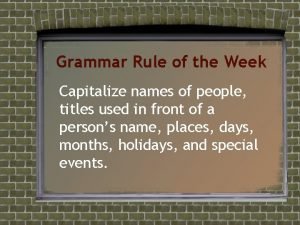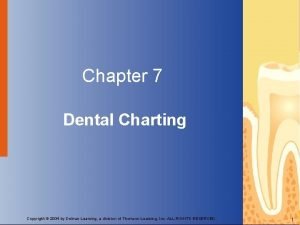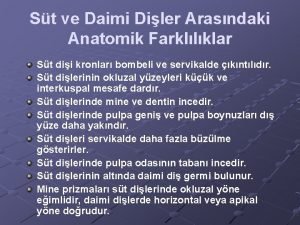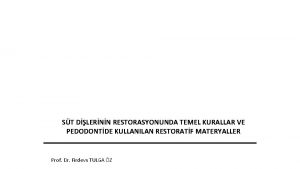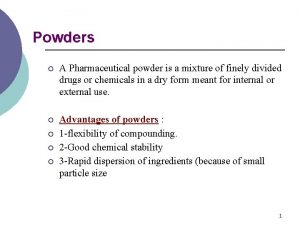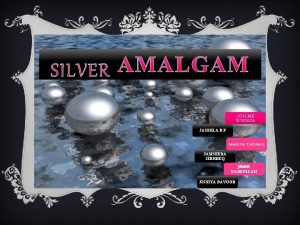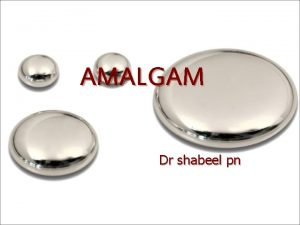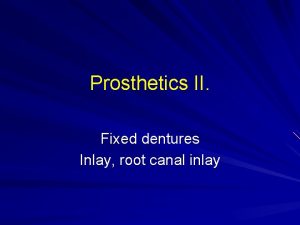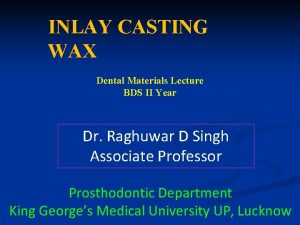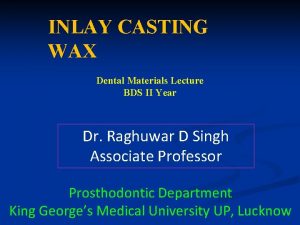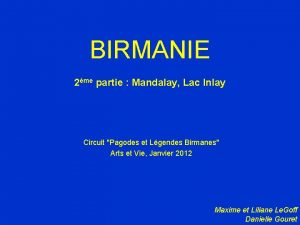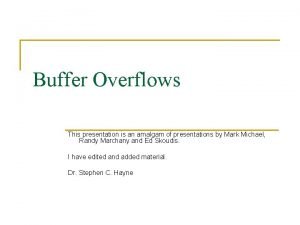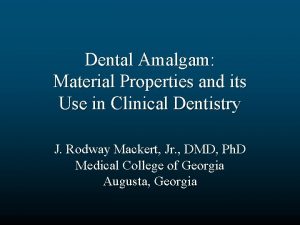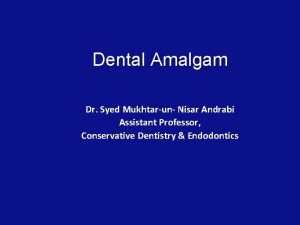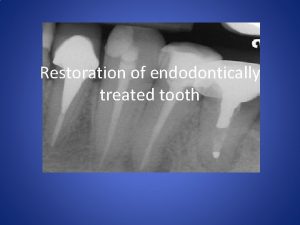INLAY VS AMALGAM DEFINITION OF INLAY Inlay is



























- Slides: 27

INLAY VS AMALGAM

DEFINITION OF INLAY • Inlay is defined as a fixed intracoronal restoration, a dental restoration made outside of a tooth to correspond to the form of prepared cavity, which is then luted into the tooth (Rosensteil)

Indications • It is an alternative to amalgam and composite when higher strength and superior control of contours & contacts is desired. • Used instead of amalgam in patients with low caries rate who require small class II with ample supporting dentin

Advantages • • Strength Biocompatibility Low wear Control of contours & contacts

Disadvantages • Higher chair side time & increased appointments • Temporary required between preparation & delivery appointments • Cost factor • Technique sensitive • Splitting forces

Basic concepts of cavity design for cast restoration

Basic concepts of cavity design for cast restoration • Preparation path • Inlay taper • Preparation features of circumferential tie – Occlusal & gingival Bevels – Facial & lingual Flares • Primary • Secondary

Preparation path • Single insertion path • All reductions oriented towards one path • The “line of draw” – path of removal & reinsertion should be perpendicular to plane across cusp tips or parallel to long axis of tooth crown

Inlay taper • Apico-occlusal taper • Cavity walls must diverge from floor outwards • To permit unobstructed removal & placement of wax pattern & casting • Developed by preparing occlusal walls so that they form obtuse angle with pulpal floor

• According to Sturdevant : – 2 ° – 5 ° from line of draw – Short vertical walls : 2 ° – Long vertical walls : > 2 ° • According to Charbeneau : – 10 ° – 16 ° of convergent angle – 5 ° – 8 ° on each wall • According to Marzouk : – 2 ° – 5 ° from path of preparation

• Taper may be increased or decreased according to following factors : 1. Wall length Taper required (< 10°) 2. Surface involvement in preparation Taper required (< 10°) 3. Need for retention taper

PREPARATION FEATURES OF CIRCUMFERENTIAL TIE • Circumferential tie – peripheral marginal anatomy • Features : – In an intracoronal cavity, the circumferential tie is in the form of a bevel, which is a plane of a cavity wall or floor directed away from cavity preparation – Occlusal & gingival Bevels • Types • Functions – Facial & lingual Flares • Primary • Secondary

BEVELS • “Flexible extentions” of a cavity preparation, allowing the inclusion of surface defects, supplementary grooves, or other areas on tooth surface. • To provide “lap joint” • Establishes closure at the interface of gold & enamel or cementum

Types & design features of occlusal & gingival bevels • According to their shapes & types of tissue involvement there are 6 types of bevels : – Partial bevel – Short bevel – Long bevel – Full bevel – Counter bevel – Hollow ground (concave) bevel

Partial bevel • Involves : part of enamel wall ; not exceeding 2/3 of its dimension • Use : to trim weak enamel rods from margin peripheries

Short bevel • Involves : entire enamel wall ; but not dentin • Use : mostly with Class I alloys specially type 1 & 2

Long bevel • Involves : all enamel wall & up to ½ of dentinal wall • Use : most frequently used for Class I, II & III alloys • Advantage : preserves internal “boxed-up” resistance & retention features of the preparation

Full bevel • Involves : all the dentinal & enamel walls of cavity wall or floor • Use : only if impossible to use other bevels • Disadvantage : deprives the preparation of its internal resistance & retention features

Counter bevel • Use : when capping cusps ; to protect & support them • Used opposite to an axial cavity wall on facial or lingual surface of tooth • It will have gingival inclination facially & lingually

Hollow ground (concave) bevel • Any bevel prepared in concave form • Allows space for cast material bulk ; improves retention & resistance • Ideal for Class IV & V cast materials

Function of Bevels • Satisfies Noy’s requirements • Creates obtuse angled marginal tooth structure strongest configuration of marginal anatomy • Creates acute angled marginal cast alloy most amenable to burnishing

Function of Bevels • Reduces error factors (space between cast & tooth substance) • Bevel – major retention form ; here direct retentive frictional component exists between casting & tooth

A bevel allows closer approximation of a crown margin to tooth In presence of bevel, distance from margin to tooth is less than D & is function of sine of acute angle of margin (m) or cosine of obtuse angle of finish line (p)

Impacts striking enamel next to a bevel can be withstood without damage (left) Where there is no bevel, unprotected enamel rods near the restoration can be more easily fractured (right)

Types & design features of facial & lingual flares • Flares – flat or concave peripheral portions of facial & lingual walls • 2 types : – Primary flare – Secondary flare

INLAY PREPARATION AMALGAM PREPARATION May Support tooth Preparation supported by tooth Retention achieved by nearly parallel opposing walls ; close adaptation of casting ; cementing medium From parallel walls & undercuts Good Resistance to occlusal forces Poor resistance to occlusal forces Narrower Isthmus width All Margins beveled Requires right angle margins No Reverse Curve Present More extensive Proximal outline (0. 5 -1 mm) 0. 5 mm clearance [access for disking, finishing, home care ] [access for finishing, home care ] Rounded Gingival cavosurface point angles [for ease of finishing gold] Definite angle [for ease of condensing amalgam] Proximal outline diverges occlusally Converges

INLAY PREPARATION AMALGAM PREPARATION Preparation must draw ; no undercuts Preparation must not draw ; retentive undercuts placed Gingival wall in 2 planes Flat gingival wall Axiopulpal line angle is rounded to prevent voids in the working die Axiopulpal line angle is rounded to prevent stress on amalgam All margins are beveled No cavosurface bevels
 Definition of inlay
Definition of inlay Amalgam polishing procedure
Amalgam polishing procedure Rebec amalgam separator
Rebec amalgam separator Indication of amalgam
Indication of amalgam Varnish liner base
Varnish liner base Isthmus in conservative dentistry
Isthmus in conservative dentistry Spherical vs lathe cut amalgam
Spherical vs lathe cut amalgam Trituration
Trituration Types of gic
Types of gic Tooth preparation burs
Tooth preparation burs Amalgam creep
Amalgam creep Pre carve burnishing of amalgam
Pre carve burnishing of amalgam Resistance form in cavity preparation
Resistance form in cavity preparation Axial wall depth in class 2 amalgam
Axial wall depth in class 2 amalgam Amalgam pin length
Amalgam pin length Class 3 cavity preparation
Class 3 cavity preparation What is solution in science grade 7
What is solution in science grade 7 Locks in cavity preparation
Locks in cavity preparation Hand cutting instruments
Hand cutting instruments Cemented pin
Cemented pin Buffoon in a sentence
Buffoon in a sentence Dental assistant charting
Dental assistant charting Black 3 kavite
Black 3 kavite Amalgam kavite prensipleri
Amalgam kavite prensipleri Deniz suyu çözücü ve çözüneni
Deniz suyu çözücü ve çözüneni Amalgam composition
Amalgam composition Eutectic mixture
Eutectic mixture Pre carve burnishing
Pre carve burnishing

